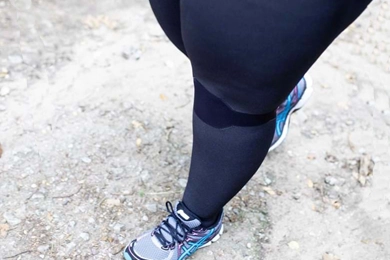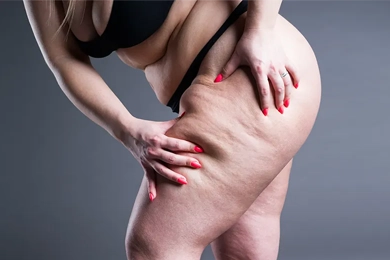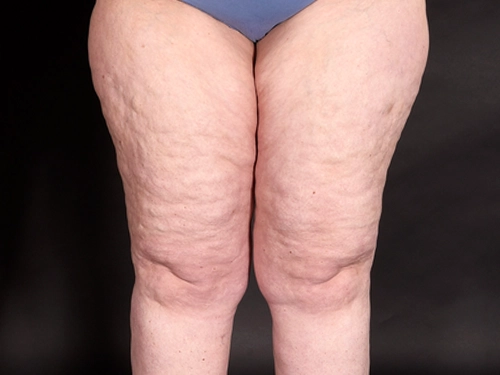Ask QuestionIn-Depth Look at Lipedema: Causes, Symptoms, and Management Strategies
Lipedema is a commonly misunderstood and often misdiagnosed condition that affects a significant number of women worldwide. It is characterized by the abnormal accumulation of fatty tissues in specific body parts, primarily the legs and arms, and can lead to pain and mobility issues. This detailed blog post explores the multifaceted causes and symptoms of lipedema, providing insights into effective management techniques.
Causes of Lipedema
Understanding the underlying causes of lipedema is crucial for effective management and treatment:
- Genetic Factors: Research indicates a strong hereditary component, with many patients reporting family members who also suffer from the condition. Specific genes associated with fat distribution and lymphatic function may play roles in developing lipedema.
- Hormonal Influences: Lipedema is significantly influenced by hormonal changes. It often first appears or worsens during puberty, pregnancy, or menopause. These periods are marked by significant shifts in the body’s estrogen and progesterone levels, which can affect fat deposition and lymphatic drainage.
- Lifestyle and Environmental Factors: While not direct causes, factors such as a sedentary lifestyle, poor diet, and obesity can exacerbate the symptoms of lipedema. These elements can hinder proper lymphatic function and fat metabolism, worsening the condition's impact.
Comprehensive Symptoms of Lipedema
The symptoms of lipedema are distinct and progressively worsen if left untreated:
- Pain and Tenderness: Unlike typical fat, lipedema fat is often painful, especially when pressed. Sufferers may experience significant discomfort with even gentle touches.
- Excessive Bruising: Easy bruising is a common symptom, occurring even from minor bumps and brushes. This sensitivity is due to fragile blood vessels within the fatty tissues.
- Symmetrical Swelling: Lipedema typically presents symmetrically on both sides of the body, affecting the legs, thighs, and sometimes the arms. The swelling is non-pitting, meaning it does not retain an indent when pressed.
- Fat Texture Changes: The texture of affected areas can become nodular or rubbery over time, a hallmark that helps differentiate lipedema from other conditions such as lymphedema.
Diagnosis and Management Strategies of Lipedema
Accurate diagnosis of lipedema is essential, typically involving clinical evaluation, patient history, and sometimes imaging studies like lymphoscintigraphy to rule out other conditions. Management focuses on:
- Diet and Exercise: A balanced diet and regular exercise can help manage weight and reduce lipedema progression. Activities that improve lymphatic drainage, such as swimming and gentle walking, are particularly beneficial.
- Compression Therapy: Wearing compression garments can help reduce swelling and pain by improving lymphatic drainage.
- Surgical Options: In advanced cases, surgical interventions such as liposuction may be necessary to remove abnormal fat cells and alleviate symptoms.
“Lipedema is a challenging condition, but understanding its causes and symptoms can lead to effective management strategies that significantly improve quality of life. Early intervention is crucial, and those experiencing symptoms should consult healthcare providers specializing in lipedema. This blog aims to empower patients with knowledge and encourage them to seek appropriate care for this often-overlooked condition.”
 Lipedema Socks
Lipedema SocksUsing customized compression clothing, sometimes referred to as lipedema socks, is one of the supportive treatments for treating the symptoms of lipedema. Read More...
 Lipedema Treatment with VASERLipo (Vaser Liposuction)
Lipedema Treatment with VASERLipo (Vaser Liposuction)A chronic illness called lipedema, which mainly affects women, is characterized by an abnormal build-up of fat, generally in the arms but also in the legs. Read More...
 Unveiling Lipedema: Treatment, and the Benefits of Vaserlipo
Unveiling Lipedema: Treatment, and the Benefits of VaserlipoLipedema is a common illness that often goes undetected or is misunderstood. It is a chronic condition characterized by aberrant fat cell buildup in the legs and, in some cases, the arms. Read More...
 Lipedema Diet
Lipedema DietLipedema is a persistent medical condition that predominantly impacts women and manifests as an abnormal accumulation of fat in particular body regions, including the legs and occasionally the limbs. Read More...

 Lipedema Socks
Lipedema Socks Lipedema Treatment with VASERLipo (Vaser Liposuction)
Lipedema Treatment with VASERLipo (Vaser Liposuction) Unveiling Lipedema: Treatment, and the Benefits of Vaserlipo
Unveiling Lipedema: Treatment, and the Benefits of Vaserlipo Lipedema Diet
Lipedema Diet